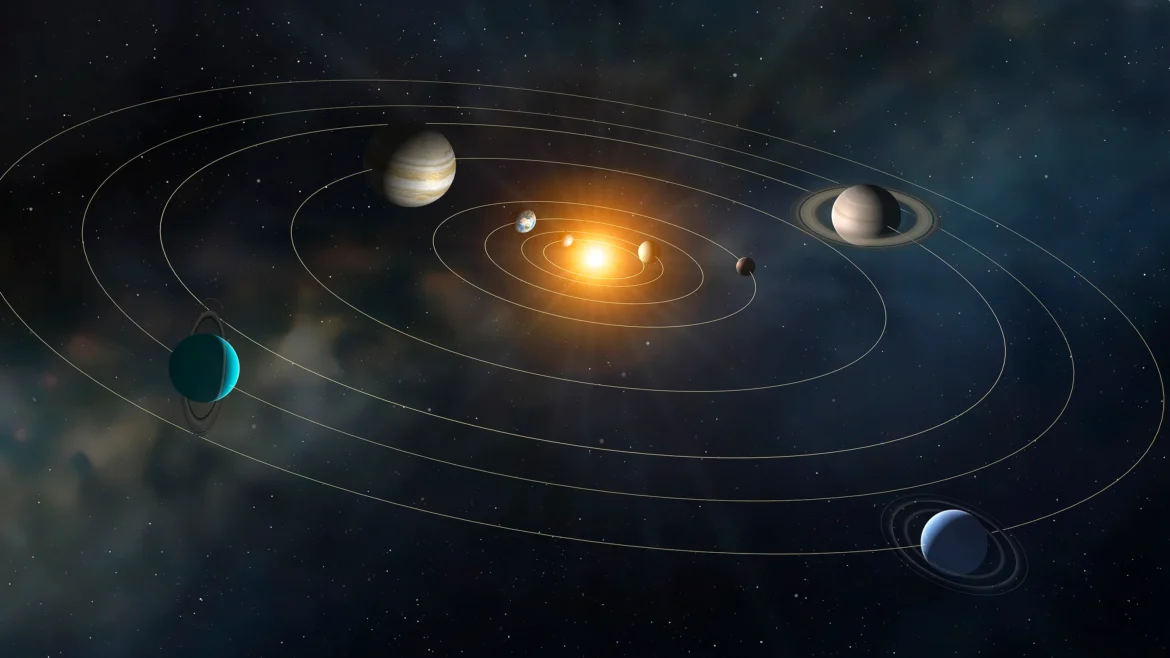The night sky is a silent stage, but above us, a vast, intricate dance is constantly unfolding. The Earth, Moon, and planets all follow paths dictated by the invisible forces of nature, tracing orbits around the Sun in a rhythm billions of years in the making. Understanding this cosmic choreography reveals the fundamental physics that govern the universe — from gravity to magnetism, from the smallest satellite to the most distant black hole.
At the heart of the solar system lies the Sun, a massive nuclear furnace whose gravity dominates the motion of all objects around it. Isaac Newton first described this force in the 17th century: every object attracts every other object with a force proportional to its mass and inversely proportional to the square of the distance between them.
It is gravity that keeps Earth in orbit around the Sun at an average distance of 150 million kilometers (1 AU), completing one revolution every 365.25 days. Similarly, the Moon orbits Earth due to our planet’s gravitational pull, completing a lunar cycle every 27.3 days. Without these gravitational tethers, planets and moons would drift into space, unmoored and chaotic.
Contrary to the simplistic image of perfect circles, planets follow elliptical paths, as described by Johannes Kepler in the 17th century. The Sun sits at one focus of each ellipse, meaning planets speed up as they approach the Sun and slow down as they move away — a phenomenon called Kepler’s second law.
Even the Moon’s orbit around Earth is slightly elliptical, which is why we experience variations in its apparent size in the sky and why eclipses don’t occur every month.
Beyond gravity, the Sun exerts influence through its magnetic field and solar wind — streams of charged particles that flow across the solar system. While magnetism doesn’t dictate orbital paths in the same way gravity does, it shapes planetary atmospheres, radiation belts, and even Earth’s auroras. The interaction between Earth’s magnetic field and the Sun’s solar wind protects life by deflecting harmful cosmic radiation.
Planets with strong magnetic fields, like Jupiter and Saturn, also display spectacular auroral displays and radiation belts, highlighting the unseen magnetic scaffolding that envelops the solar system.
Gravity can reach extremes far beyond planetary systems. Black holes — points in space where gravity is so intense that not even light can escape — warp spacetime itself. While no black holes exist in the solar system, their presence elsewhere illustrates the cosmic principle that orbiting bodies follow the curvature of spacetime, a key insight from Einstein’s theory of general relativity. Just as planets orbit the Sun along curved paths defined by gravity, stars can orbit invisible black holes in distant galaxies, tracing gravitational dances on a much larger scale.
The result of these forces — gravity, orbital mechanics, and magnetic interactions — is a remarkable cosmic stability. Each planet follows its orbital lane, moons circle their planets, and the Sun dominates as the central anchor. Yet the system is not static: perturbations from other planets, passing asteroids, or even distant stars can slightly alter orbits, reminding us that the solar system is a living, dynamic entity.
Understanding this celestial choreography is more than academic. It informs everything from satellite launches to climate models, and it reminds us that the motions of our planet and its neighbors are governed by universal laws that extend to the farthest reaches of the universe.
As we gaze at the Moon tonight or track the planets with a telescope, we witness a grand cosmic ballet — one orchestrated by gravity, colored by magnetism, and framed by the vastness of space itself.

